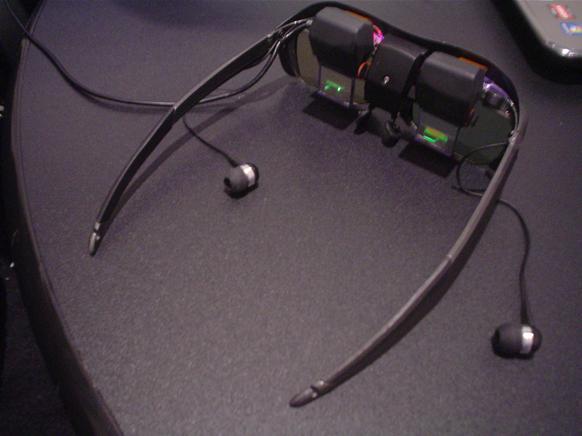CES: Clear Glasses to Augment Your Reality
Augmented Reality (AR), which overlays virtual information on top of the real world, is a tantalizing concept, but the technology is still a bit complicated. To see virtual directions float in front of you, you have to either look at the world through the screen of a smart phone, or don a pair of bulky, goofy video goggles. Many experts have questioned whether AR will ever catch on in the consumer market.

At the 2011 Consumer Electronics Show in Las Vegas hardware company Vuzix has revealed the first clear AR glasses for consumers. The glasses, called Raptyr, use holographic optics instead of video screens to make digital objects appear in mid-air. The approach is challenging, not least the interface has to compensate for (or compete with) natural light. For this reason the lenses can electronically darken to compensate for brighter or darker environments.
The Raptyr glasses, which have won a CES Innovation Award, feature a 6-megapixel camera, a microphone, headphones and a motion tracking system. They could be plugged into a PC, smart phone, or gaming system.
They are much less bulky and conspicuous than traditional video headsets, which are used in niche fields such as architecture and design, animation, and military training. “It looks a lot like a pair of shutter glasses you’d buy from Sony,” CEO Paul Travers told Technology Review.
Keep Reading
Most Popular
Large language models can do jaw-dropping things. But nobody knows exactly why.
And that's a problem. Figuring it out is one of the biggest scientific puzzles of our time and a crucial step towards controlling more powerful future models.
How scientists traced a mysterious covid case back to six toilets
When wastewater surveillance turns into a hunt for a single infected individual, the ethics get tricky.
The problem with plug-in hybrids? Their drivers.
Plug-in hybrids are often sold as a transition to EVs, but new data from Europe shows we’re still underestimating the emissions they produce.
Stay connected
Get the latest updates from
MIT Technology Review
Discover special offers, top stories, upcoming events, and more.